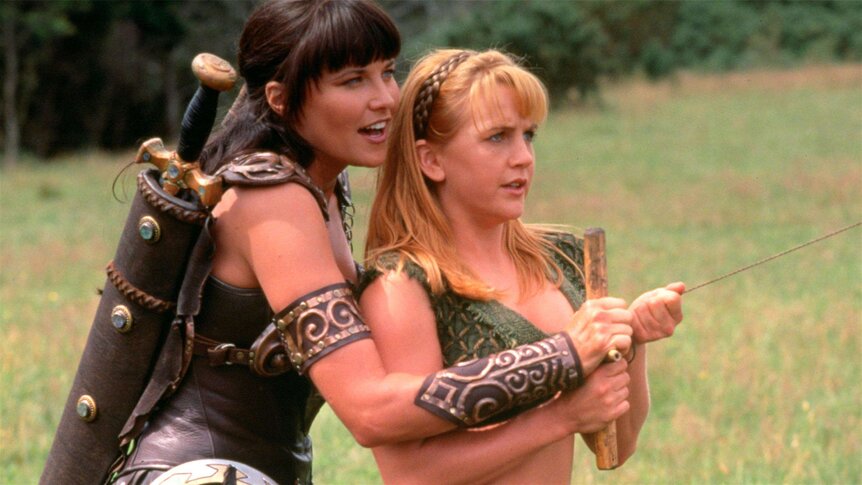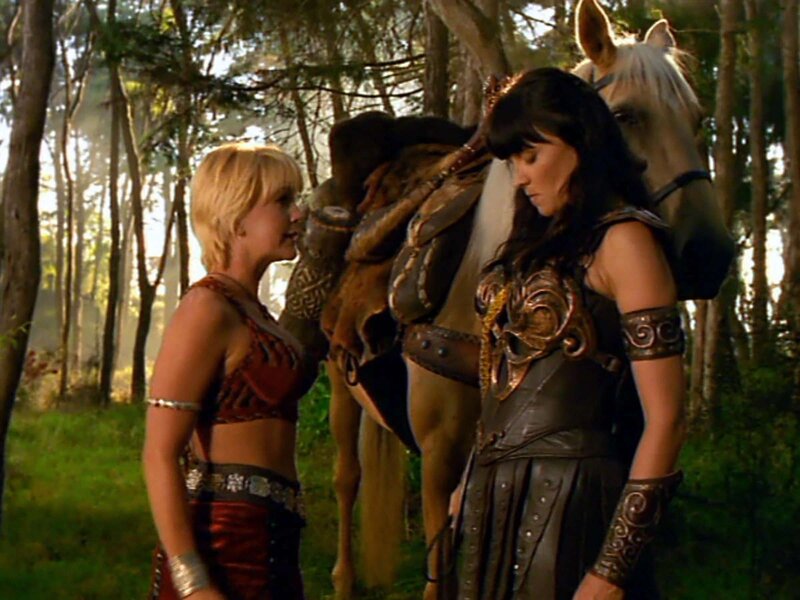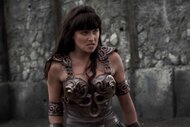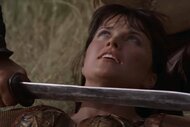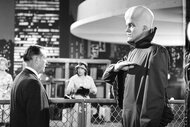Create a free profile to get unlimited access to exclusive videos, sweepstakes, and more!
'Xena: Warrior Princess' writer on Xena, Gabrielle, and what it takes to make a centaur
SYFY WIRE talked with one of Xena's writers and producers, Steven L. Sears, about what it took to bring the beloved fantasy series to life.
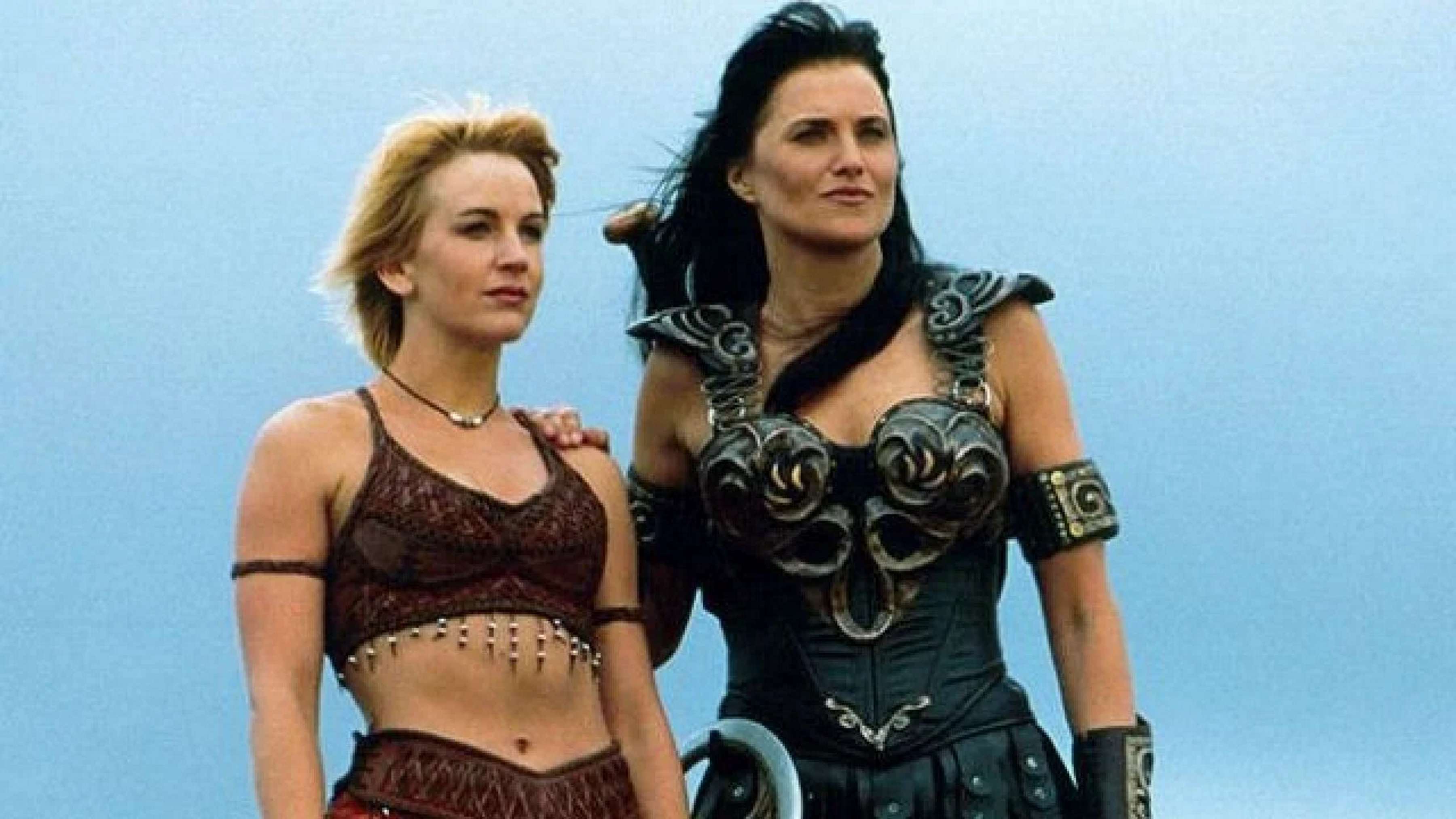
1995's Xena: Warrior Princess was a groundbreaking show that centered on a woman warrior named Xena (Lucy Lawless) — a warrior in a fantastical world who could kick everyone’s butt — and her trusted partner, Gabrielle (Renee O'Connor).
The show covered a lot of ground, with each episode having the potential to bring something completely different to your television screen. “We ended up doing slapstick emotional dramas, we did infanticide, patricide, all these different topics,” Steven L. Sears, a writer and producer on Xena told SYFY WIRE. “We approached spirituality as well, which for an action show was almost unheard of. And we, of course, disguised social issues within our particular episodes — we just basically threw everything out there.”
The heart of Xena is the relationship between the warrior princess and Gabrielle, a partnership that the LGBTQ community embraced as a romantic one. The connection didn’t exactly surprise Sears at the time — he knew that there was often this subtext in the ‘90s around many same-gender characters.
Making Xena and Gabrielle queer, however, wasn’t something the writers set out to do at the beginning. The writers did consciously make the two closer as the series progressed, which Sears described as a natural progression. “Characters start to take on their own life, and it's an interactive thing — you're following back and forth with what's happening on the screen and what you're writing,” he told SYFY WIRE. “And to make [Xena and Gabrielle] real, they had to become close, they had to become more identifiable with each other … their affinity for each other, their devotion to each other, and their love for each other developed over time, which by the way, is actually how it happens in life.”
The world of Xena differed from contemporary life in certain ways, of course. One of those obvious differences is that the show was full of magical creatures like centaurs. Creating the visual effects for these otherworldly creatures was a challenge given the capabilities of the time and the show’s limited budget. The low-tech methods for creating the centaurs in particular also created some humorous moments for the crew.
“We would bring in a horse and we would shoot the horses,” Sears explained about the centaur-making process. “It was standing there and moving around, and then we would also bring in the actor who had a kind of kilt that would blend into the horse's fur, and they would be standing on uneven block shoes so that they also would have that little rocking motion.
“And then we basically merged the two films together. Now, in the process of doing that, it goes through several stages. so there's a midway stage where it's a little bit transparent — you can still make out the horse and you can still see the body. Sometimes when it got cold in New Zealand, when the horse would exhale you'd see vapor coming out of the horse's nose. When you merge that over some guy who's a centaur, basically, we had nipple mist. So you would see just little wisps coming out from the breasts of the actual actor until we finally cemented the transfer.”
Nipple mist aside, what has really stuck with Sears over the years, however, is the fandom community that grew around the show. “I really love the passion of the fans,” he said. “The Xena fans are just amazing. I know other shows have amazing fandoms but I've never seen anything like the Xena fandom … they are the kindest, most wonderful, most caring people.”
